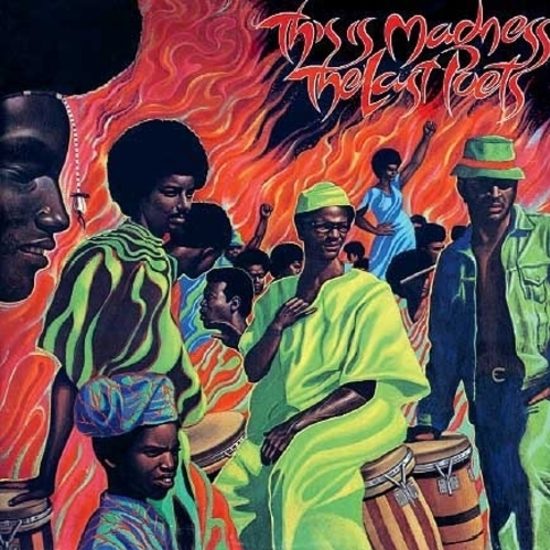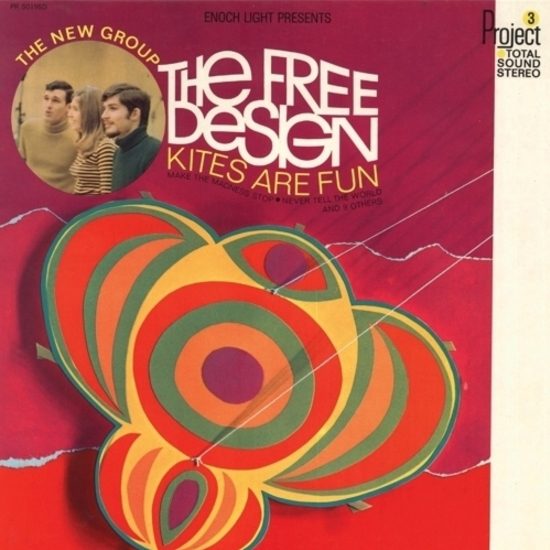
Welcome back to Sound & Vision, the Rumpus profile series that spotlights the creative talents of those working behind the scenes in the music industry. Coming up in this installment is my conversation with Matt Sullivan, who founded Light in the Attic Records in 2001. LITA has reissued significant lost classics by artists including Rodriguez, Betty Davis, Lee Hazlewood, and many others. It has also lovingly released compilations of lost soul, new age, and even country funk gems. While many independent labels have struggled to remain viable, LITA continues to grow, and it’s also become a major distributor for over fifty international labels. I’ve often heard the adjective “timeless” used to describe the music released on LITA. I think that’s accurate, and particularly fascinating at a time when many other labels are focusing on putting out instant hit singles. I was especially excited to talk with Sullivan about how he’s cultivated the label’s growth, preserving its commitment to putting out great music while also meeting the demands of a changing, and often challenging, market.
***
The Rumpus: I thought I might begin by asking you about LITA’s core mission, which is described on its website as “put out great music, wherever it may be found, however it may sound.” Putting out great music is arguably the mission of any great record label, so tell me more about the “wherever it may be found, however it may sound” part. How did you first become interested in music curation, and then specifically in finding and presenting lost greats?
Matt Sullivan: I grew up in the suburbs outside of Seattle. I loved music but I was a pretty awful musician—maybe that’s how record label owners come to be! [Laughs] When I was in high school we had a small 10-watt radio station. It could only be heard for about a mile from the school, but it was on the FM dial and this was about ’93 or ’94 so it was an exciting time in Seattle music. There were other students who may have been much more knowledgeable about music than I was, but in my senior year the teachers let me be the music director because they thought I was the only kid who wouldn’t steal all the promotional CDs. I always liked curation, and that’s how I got my start in the music business.
Rumpus: How did you learn the business side? Had you also worked in record stores or for labels? If so, were these specifically geared toward reissues?
Sullivan: After high school I did college radio, interned at record labels, and tried to get a label going. My idea at the time was to start a label featuring contemporary artists. I ended up doing an internship at Sub Pop in Seattle, and Susie Tennant, who was the commercial radio person, knew I was planning a study abroad in Spain the following semester. She suggested that I call a label there called Munster to see if I could intern. I cold called and they said, “What’s an internship?” I said, “That’s where I work for free.” And they said, “You’re hired.” Munster’s focus was on reissues—back then it was a lot of American and British punk rock like The Stooges, the New York Dolls, Spacemen 3, Suicide, and stuff like that. It opened my mind up to that whole world, and I fell in love with the idea of the archival process, finding releases that maybe hadn’t gotten their due or were just off the radar. I finally started my own label in 2001. I had gotten laid off from a job I was about to quit and I used my unemployment to be proactive in pursuing my dream.
Rumpus: Tell me more about the story behind the first LITA reissue—was that The Free Design?
Sullivan: Actually it was The Last Poets, which are arguably one of the true founders of hip-hop. At first it was just me working by myself, but soon after Josh Wright became my business partner. The Free Design, a ’60s and ’70s pop group, was maybe our fourth release—we ended up putting out seven albums and also a remix series with a lot of other artists.
Rumpus: Often finding great material is only the first step, right? Was it often difficult to obtain the licensing, and what were some of the common challenges you ran into?
Sullivan: It was difficult for sure. In the beginning I had barely anything to show to people as sample work, nothing to show my credibility. Finding the projects is one thing, but since we don’t do bootlegs, the licensing was, and often still is, the most time-intensive and difficult part of the process. A lot of people get excited about the process of starting a reissue label until they realize that, and then they start disappearing or doing bootlegs instead.
Rumpus: Also, you started the label in the pre-Internet era, right? So I imagine that even finding out who the rights-holders were was often difficult?
Sullivan: Yes! We’re talking 2001 or 2002. People in the music business were in for maybe forty years, that’s how they knew who to call, or who you were when you called them.
Rumpus: When you found the right person, was it often hard for you to get permissions?
Sullivan: We were offering to put stuff out that wasn’t widely available—The Free Design catalogue for example had never been reissued outside of Japan. There weren’t many people banging down their door, so I think they were excited about working with people who were genuinely fans. I think it’s just integrity and passion. Persistence goes a long way. Over time you build up the name of the label, and that makes it easier to reach out.
Rumpus: How about on the distribution side? How did you convince folks in the beginning that there was a market for these recordings, especially ones that were not commercially successful on their initial release?
Sullivan: One thing I learned from my time at Munster is they had a good system for selling direct to record stores. They were very hands on, and were very DIY rather than putting all of their eggs in the outside distributor’s basket. Since day one Josh has headed up distribution over here. At first I remember we made up about a thousand postcards with the album covers from our first releases and our contact information, and I think we sent it to some retail contacts I got from a guy I used to work for at Loosegrove Records. We sent those postcards to about three or four hundred record stores in America and Canada. We were so excited, thinking that the orders would just start pouring in. We got one call, from Don’s Music in New York. Again, no one is going to hand you this. From the record store’s standpoint, they don’t want to open an account with maybe seventy-five different tiny record labels, each with a handful of releases a year.
Rumpus: So how did you break through?
Sullivan: A lot of it was a slow process, getting distributors on board as you build your catalogue. We also started getting other labels on board, for example distributing Munster in the United States. We did a co-release with a label called Vampisoul that was actually a Last Poets album, so we ended up distributing their stuff. Our catalogue grew to hundreds, and we had better luck both selling direct to stores and connecting with other distributors around the globe. But we also realized if you personally worked really hard on a project you’re more likely to be passionate about it than someone who has it just as a title on a long list. Josh would make calls to talk about the records, and then we started doing road trips where we’d take the seats out of a big van or truck and load up with thousands of our wares, driving around the country and talking with folks at record stores, giving them context for who we were and what we were doing.
Rumpus: Wow, that’s so cool. You’re sort of like a band on tour, but rather than performing your music, you’re presenting music recordings.
Sullivan: Yes! That’s what it was. We went all over. Nashville, Detroit, back then we might have had hundreds of titles we were distributing. When we showed up at their doorstep, they might buy only a small number. A lot of those trips barely broke even. Some even lost money. But it was those relationships we established that are still strong today. Josh was such a huge part of that. I still remember the day he first drove up in that minivan. Those were great experiences.
Rumpus: Has the “vinyl resurgence” helped to drive your sales?
Sullivan: It’s become more competitive in a lot of ways. A lot has happened in the last fifteen or sixteen years, and there are so many more reissue catalogue labels now. It’s partially driven by changes in media. First there were 78s, then 45s, then LPS and cassettes, then CDs, and digital music, and the music industry has been very smart and greedy about getting people to rebuy their collections. Right now you have a lot of people going back, especially old timers who want to go back into vinyl. But record stores are being bombarded. It used to be you could buy Bad Company’s Greatest Hits or Elton John’s Greatest Hits for like a dollar in record stores, but now these records are bring reprinted by the major labels and now they’re $28 records with no liner notes, no interesting jackets, and probably not properly remastered. And they’re also competing alongside records like ours. It’s great that more people are buying records, but I think those numbers are being skewed in some ways because maybe people are buying 50,000 copies of reprinted “classics” like the Beach Boys’ Pet Sounds, but not 50,000 Jim Sullivan LPs.
Rumpus: Sometimes I’ll hear people talking about how an original release wasn’t “done correctly”—what does that mean? Is it a problem with the recording quality, the way it was packaged, or promoted?
Sullivan: It can be any one of those things. For example in the archival process, you’ll want the master tapes, or even if you don’t have those, you’ll want to have a really nice vinyl transfer, and have a really good engineer mastering, or restoring it as best they can. You’ll want it to have a really nice jacket, and/or documentation with great liner notes, maybe a really great interview with the artists or others involved with the estate, including photos or other archival materials and ephemera. Overall you’ll want a really outstanding package.
Rumpus: So you’re introducing—or reintroducing the artist to the world?
Sullivan: Even with all of that, if you don’t publicize the release then quite often these reissues of great records are relegated to what happened years ago when they first came out, so they remain overlooked. The archival process is far and away the most important—at least that way the recording is properly documented. But you also need that push to get it out of the basement. Some reissue labels don’t want to share outside of the collector world, but we believe these albums were made to be heard and we want to give people the opportunity to hear them.
Rumpus: Earlier you mentioned Jim Sullivan. Please tell me more about the story behind this artist—how you discovered his music, your quest for his master tapes, and a bit about the fascinating legend behind his disappearance.
Sullivan: Oh, wow, if someone asked me what my favorite LITA releases were I’d probably say this one and maybe Native North America Volume I. With Jim Sullivan, I was just obsessed, fanatically! I first found out about Jim on a site called Waxidermy. His record was made in Los Angeles in 1969. It was a private press recording. At the time Jim had been playing at this place in Malibu, and Lee Marvin and Farrah Fawcett, and all of these celebrities would show up. One night these two Texas guys showed up, and they had lots of money from the oil business, and they wanted to help Jim make a record. They put about seventeen grand into it, and hired some guys from the Wrecking Crew, and they made this incredible album that was folk and country mixed with psychedelia.
Rumpus: But the guys who put the record out didn’t really have industry contacts or experience, right? So the album didn’t get that push that would have put Sullivan on the map?
Sullivan: Right. But the songwriting, and that voice, I was listening to the album on the website and I just fell in love with it. Also, some of the lyrics seem to eerily foretell Jim’s disappearance a few years later. He was driving out to Nashville to do some music work but on his way he vanished in New Mexico, his car and all of belongings left behind. He was never heard from or seen again. You know, sometimes you hear a story like this and it overshadows the music, but in this case the music was there. It was such a masterpiece. I found the producer, Jimmy Bond, and he started choking up when he heard the audio. We also went out to New Mexico to retrace Jim’s footsteps to see what we could uncover. Afterward, that led us to San Diego where his son and wife were living. We reissued the album in 2010, and we actually have more of his music coming out this year, which is really great!
Watch this LITA mini-doc on Jim Sullivan:
Rumpus: Another of the label’s highlights was the reintroduction of Sixto Rodriguez, star of the Oscar-winning film, Searching for Sugar Man. How did that come about?
Sullivan: There was a compilation that the Dublin-based producer David Holmes put together in the early 2000s. “Sugar Man” by Rodriguez was the first track on the compilation, and when I heard it, I became obsessed with Rodriguez. I found a copy of the Cold Fact album, and like with the Jim Sullivan album, I just loved it and couldn’t understand how people could not know about this album, this music. I wanted to share it! I didn’t want it to be done as a bootleg or done incorrectly.
Here’s a trailer for LITA’s Sugar Man release:
Rumpus: Let’s talk about how you’ve approached the growth of the business for a moment. In addition to its own releases, LITA now distributes a large portfolio of smaller American and hard-to-find international labels. How do you go about considering potential label partners? Do you go completely with your creative gut, or are there metrics you’re looking at to determine the viability of the market?
Sullivan: It’s both. Obviously we want to distribute stuff we like. For example Music From Memory, out of Amsterdam, is probably my favorite label right now. They just tap into stuff I never would have heard or known about, and they do such a great job at it. We want to be part of something we feel passionately about, so we’re not driven totally by the bottom line. Most of what we do is archival but that’s pretty broad, spanning genres and eras. There are a lot of possibilities for partnering with labels that share our values but bring something new, too.
Rumpus: In 2010, LITA also announced its first imprint, cinewax, for vintage and contemporary film. You’ve also expanded the music licensing department and you’re now placing catalog tracks and original music in film, television, and advertisements. How many projects are you currently working on a time, and how many releases do you currently put out in a typical year?
Sullivan: We are working on a lot all of the time, but so much of the annual release calendar is dependent on stuff like copyright clearances, or waiting on liner notes, etc. We typically put out about forty records a year.
Rumpus: You mentioned that LITA has undertaken road trips to indie record stores, and more recently, it’s opened its own brick and mortar record store, located within the KEXP Gathering Space. Is this intended as a pop-op, or do you feel that physical spaces are becoming more important among long-time vinyl lovers and also a new generation?
Sullivan: We actually used to have a record store at the LITA office (in Seattle), which was open two days a week. But this past Black Friday Record Store Day in November we opened the new store at KEXP. We stock both new and used records, and some releases on other labels that we’re not distributing but are a great fit with us. We’ve also had meet-and-greets with artists who come to the station. Brad Tilbe is the store’s manager, and KEXP is a great partner. We’ll see how it goes. It’s off to a really good start!
***
BONUS MATERIAL
Here’s a Spotify playlist of some favorite LITA artists/tracks:
Check out this trailer for Tumbleweed Records, a great label out of Colorado with a fantastic backstory. LITA is releasing an anthology of the label’s recordings from 1971-1973:
https://youtu.be/0aCYVWbqxMI&w=580
***
Feature photograph of Matt Sullivan © Hilary Staff. All other photographs provided courtesy of Light in the Attic.
***
This interview has been edited and condensed. If you’d like to recommend someone for “Sound & Vision,” drop Allyson a line here.






